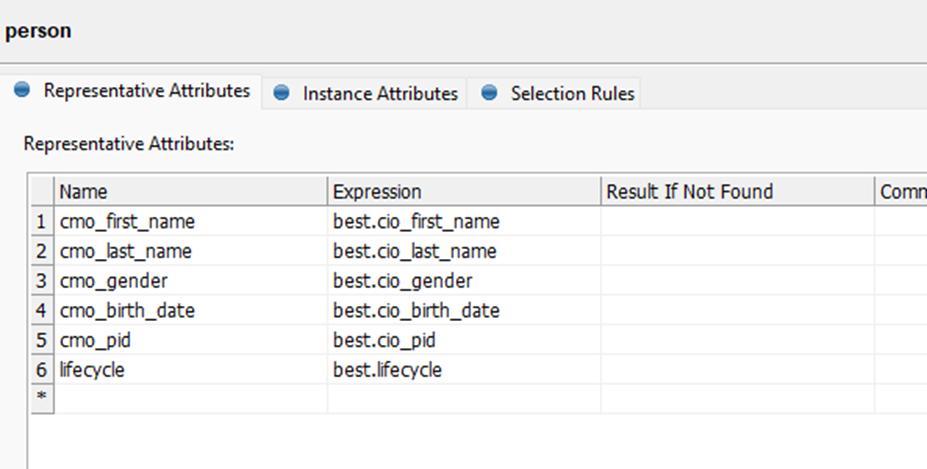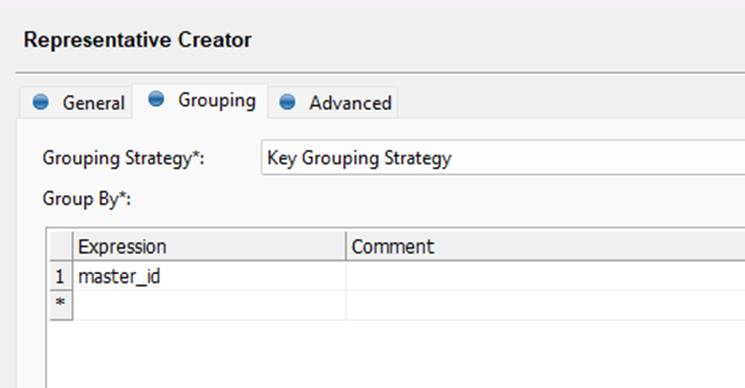hello everyone , I am unable to understand how to use representative creator step can you please explain it in detail with an example so that I am able to use it .
Thank you.
Best answer by ivysakh
View original +1
+1
hello everyone , I am unable to understand how to use representative creator step can you please explain it in detail with an example so that I am able to use it .
Thank you.
Best answer by ivysakh
View originalHi
Key Functions of the Representative Creator Step
Let’s look at an example from the CDI Example MDM project:
From all the available attributes for entity party, a logical group of below attributes are created under ‘Rules’:

We assign the cleansed version of each attribute to its corresponding mastered column. Expression supports the usage of aggregate functions such as max, min, first, last, count etc.
Next, we move to the 'Selection Rules' tab, where we define the logical rules used to selectively choose the record values for these attributes:

Each expression will be resolved to a numerical value. The following is a brief explanation of the rules used in the above example:
Grouping of Duplicate Records:
Duplicate records are grouped based on a common field, typically the master ID, as part of the merge plan in MDM.

Benefits of Using the Representative Creator Step
No account yet? Create an account
Enter your E-mail address. We'll send you an e-mail with instructions to reset your password.